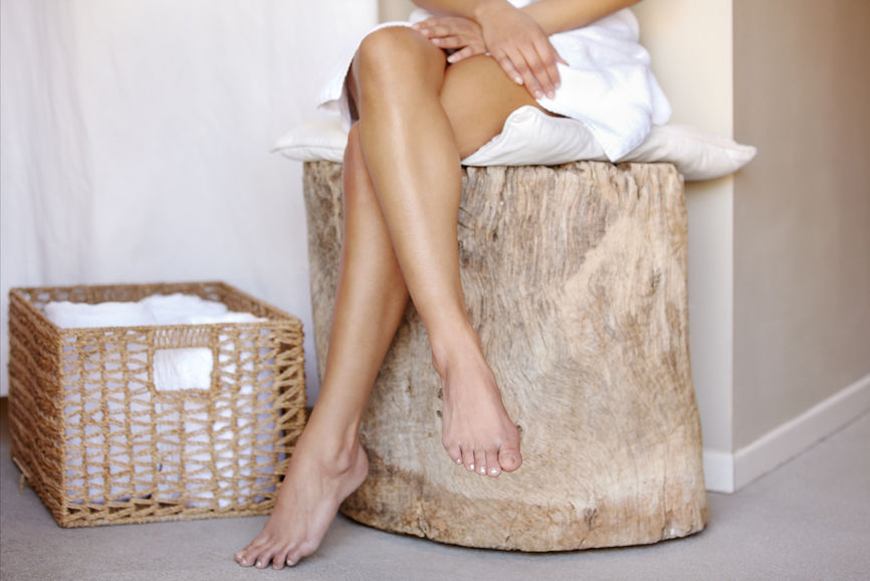As with many taboo subjects in my adult life, the only exposure I'd ever had to this phenomenon prior to it happening to *my friend* was on Sex and the City, when Samantha famously tried to dye her situation and ended up with a Bozo-the-Clown bush. ("There is something scarier than a clown!") Since *my friend* is more than 10 years younger than the fictional Samantha, I couldn't help but wonder (in true SATC fashion) if the change she'd experienced is normal. "As we age, there are fewer pigment-producing cells at the root of the hair follicle," Danbury, Connecticut dermatologist Mona Gohara, MD tells me. "This is a predestined thing—it’s genetic and can happen at any age." With that said, she cites the late thirties as the time at which pubic hair typically begins to gray.
Some health factors, however, may accelerate the graying process, says dermatologist Joshua Zeichner, MD. "Hormonal abnormalities like thyroid disease as well as low vitamin B12 levels may be associated with early graying of the hair," he says. He further notes that one theory about why hair grays is that hydrogen peroxide builds up in the hair shaft, causing oxidative stress that destroys the pigment from the inside out. "For this reason, antioxidants may be used to prevent gray hair, which is why they're being incorporated into hair care products," he explains.
So, those of you who are not yet gray should work with experts on your thyroid issues, take your B12 supplements, and slather on the antioxidants in order to keep your hair its current hue for as long as possible. If, however, you're like *my friend* and the change has already taken place, there is some bad news: this cannot be reversed, say these docs. All, though, isn't lost—find pro input on your options below.

{{post.sponsorText}}
What to do when your hair goes gray... down there.

Dye it
Beyond the Bozo bush, warns Dr. Gohara, dye offers another potential risk. "The labia can get irritated," she says. "so proceed with caution." If you're going to go this route, it makes sense to look for products that are as close to natural as possible. Alternatively, Betty creates dyes specifically for this sensitive area which include natural components such as chamomile, rosemary, and aloe and do not include parabens or ammonia.
Remove it
Waxing—however painful—is a good option for those wanting to reduce the appearance of grays. Melanie Coba, National Brand Ambassador for the European Wax Center, tells me most of her guests go bare to eliminate the problem entirely. Since not everybody is into the Brazilian look, however, I ask her if there are certain shapes which might help to hide the grays instead. "As no two bodies are the same, our expert waxers will assess the areas where gray hairs are visible and work with each client to ensure we provide them with the shape that works best for them," she tells me. "Some prefer a triangle and some a strip, so depending on where the gray is, I would shape accordingly." Generally, she adds, tidying the area will hide grays since they stand out not just in color but also in texture. "For those who opt not to go completely bare, it helps to have the hair that’s left behind trimmed short so the grays won’t show as much," she explains.
Stay gray
Of course, there is one final option available to those who, like *my friend*, find themselves in this scenario: embrace the grays. After all, more and more women are showing love to their natural hair hues up top—including Chrissy Teigen, whose tweet about loving her gray hairs went viral earlier this year—so why not down below, too?
In semi-related news, Chrissy Teigen tried vaginal steaming—here's what you need to know about the practice. Plus, what's a vaginapractor? One woman explores.
Loading More Posts...